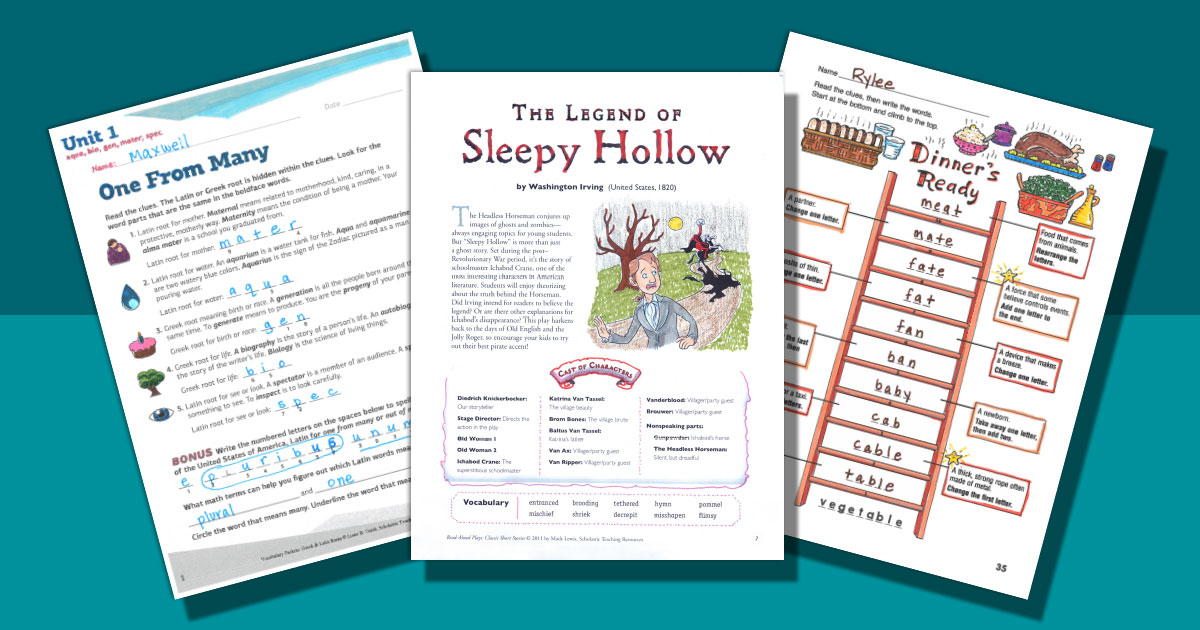Looking for new resources to help you put the Science of Reading into practice in your classroom? Then you’ve come to the right place!
In this three-part series, we’ve invited K–6 teachers from around the nation to tell us about the Scholastic Teachables resources they’re using to support evidence-based literacy instruction.
And we’re not just sticking to phonics. In this series, we explore the full range of elements that make up the interdisciplinary body of research known as the Science of Reading. In fact, we follow the lead of top researchers and recommend resources that support the two types of instruction required by the Science of Reading:
1. Code-Focused — Skills that help students translate letters into sounds, such as phonics, phonemic awareness, and fluency
2. Meaning-Focused — Skills that help students understand what they are reading, such as vocabulary and comprehension
In part three of this series, we’re thrilled to welcome John Gottshalk, an elementary Enrichment/Gifted and Talented teacher at Stony Brook School in Branchburg, New Jersey, who has more than 20 years of experience teaching 4th grade. Here are the Scholastic Teachables resources he uses to implement the Science of Reading in his classroom:
1. Greek & Latin Roots: Units 1 & 2 — Meaning-Focused
With multi-page, multi-functional units like this one, my students can really understand the meaning of popular roots and have fun solving various problems and puzzles along the way.
2. Community Vegetable Garden — Meaning-Focused
There is so much value in each of these close reading passages. The reading comprehension questions are varied and hit a variety of standards, ensuring that my students understand the text and are not just reading it. The content of the passage is thought-provoking and oftentimes leads to further exploration of the topic.
3. The Legend of Sleepy Hollow — Code- and Meaning-Focused
I have a filing cabinet drawer full of read-aloud plays from Scholastic Teachables, such as this one, that are a hit year after year! My students are always eager to have a part in these plays. They learn a lot about fluency, projecting their voice, and acting as a character, as well as analyzing the literary elements of the play.
4. Candy Overload: Making Inferences Task Card — Meaning-Focused
This short text is one that many kids can relate to — eating too much candy! Aside from aligning with a boatload of standards, these task cards allow teachers to choose which reading comprehension strategies they’d like to target — everything from making inferences to summarizing to determining a theme.
5. Dinner's Ready Word Ladder — Code- and Meaning-Focused
The Scholastic Teachables site has hundreds of word ladders, which I like to put out as a challenge/reach activity at the beginning of class. After explaining just one of these thinking activities (where students use clues to morph words in sequential order), my word detectives understand what they need to do. We also have discussions on morphology to decode what’s happening to the words through the progression up the ladder. These skills sheets are very popular with my students—they always want to try “just one more!”
6. Guess What It Says - Rebuses — Meaning-Focused
At my school, we believe that studying language should be fun and interesting, so we like to play with words. I’ve created a “Word Challenge Wall” bulletin board, where I enlarge and post resources like this one. Students enjoy solving these puzzles and boasting about how many they can “get” within a period of time. Because there are so many resources to choose from on Scholastic Teachables, the Word Challenge Wall can be changed many times.
7. Idioms & Other Expressions: Read Words in Context — Meaning-Focused
We like to popcorn-read passages that deal with word play, such as this one, to figure out what these expressions mean. After students find the true meanings of these idiomatic phrases, they split a sheet of paper in half. On one half, they select an idiom from the passage and label/sketch out its literal meaning. On the other side, they label/write what the idiom is trying to express. The many activities following the passage ensure that my students understand what these crazy idioms all mean. So much fun!
Over my years teaching, I’ve found many different ways to use these resources, from printing texts for students to color-code with highlighters to projecting for whole-class work to sharing digital files to students’ Chromebooks. The varied content keeps students engaged and learning all kinds of reading and writing skills. There are literally thousands of teaching resources on the Scholastic Teachables site, and I often pull out those that I know my students will enjoy.
Martha Garcia, a K–8 Title I Instructor in San Antonio, Texas, and Laura Zakeski, a first grade teacher at Seton Catholic School in Hudson, Ohio, shared their favorite Science of Reading resources on Scholastic Teachables in Part 1 and Part 2 of this series.
